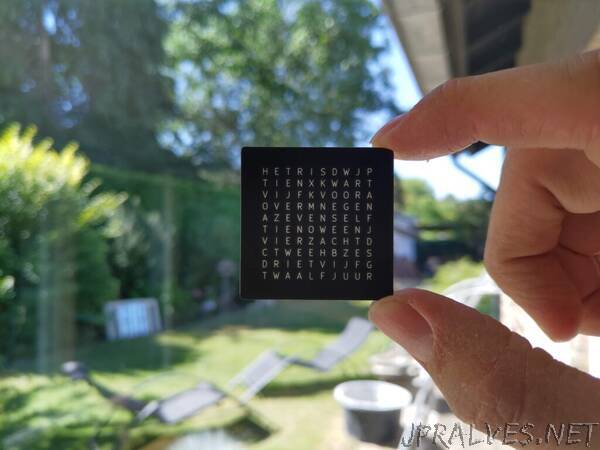
“Summer break is here, and with some time to spare I decided to challenge myself with a project that I call “Clocksquared Mini”. It is Clocksquared, but in a tiny wristwatch package. This gives rise to a major challenge, as everything has to be shrunk down approximately ten times from a 300x300x50 mm to an approximately 35x35x7 mm package. Moreover, running everything off a tiny battery whilst maintaining an acceptable battery life also turns out to be quite difficult.
I already have made quite some progress that I would like to share. I recently finished designing the main PCB, which is a 2-layer board. It features a 10×10 Charlieplexed grid of 0402 SMT LEDs (e.g., individually addressable). The back side of this PCB contains an ATMega328P(-AU) microcontroller, a DS3231MZ+ RTC module and a CR12xx battery holder, amongst some other components such as some resistors and a push button. Note that I specifically chose the MZ+ version of the DS3231 RTC because it comes in a smaller package (SOIC-8) than the “normal” one. I had the PCB manufactured and assembled (top side only) and here is the result:
I am very happy with this result (especially the quality of the manufacturing), even though I already came up with a few design improvements that I will implement for the second prototype. I have not yet tested the LED array and how well Charlieplexing will work in my case. I’ll discuss that later, when I assemble the bottom side of this PCB.
For the front of the clock, I was inspired by a YouTube user called sjm4306. I came across his excellent idea to use a thin PCB with only a solder mask pattern with the 10×10 letter grid that makes up the clock. The 0.8 mm thick FR-4 PCB material acts as a diffuser and the solder mask pattern ensures that only the letters are translucent. The result is excellent, with much better resolution than I had expected. Previously, I was worried that I would’ve had to use e.g. micromilling techniques to obtain this front plate; who knew conventional PCB manufacturing techniques would yield a much better, simpler, cheaper and more scalable result?”
